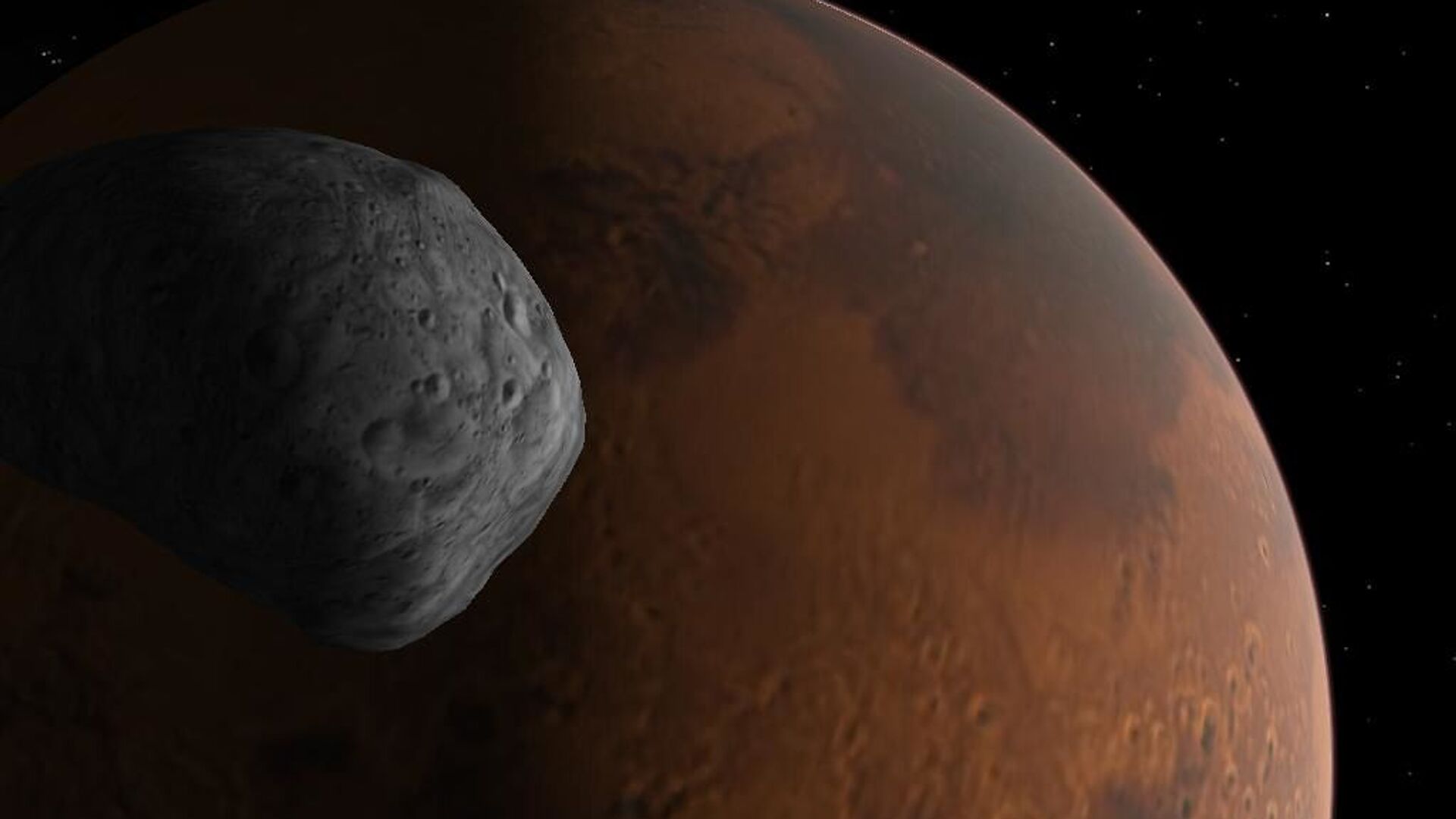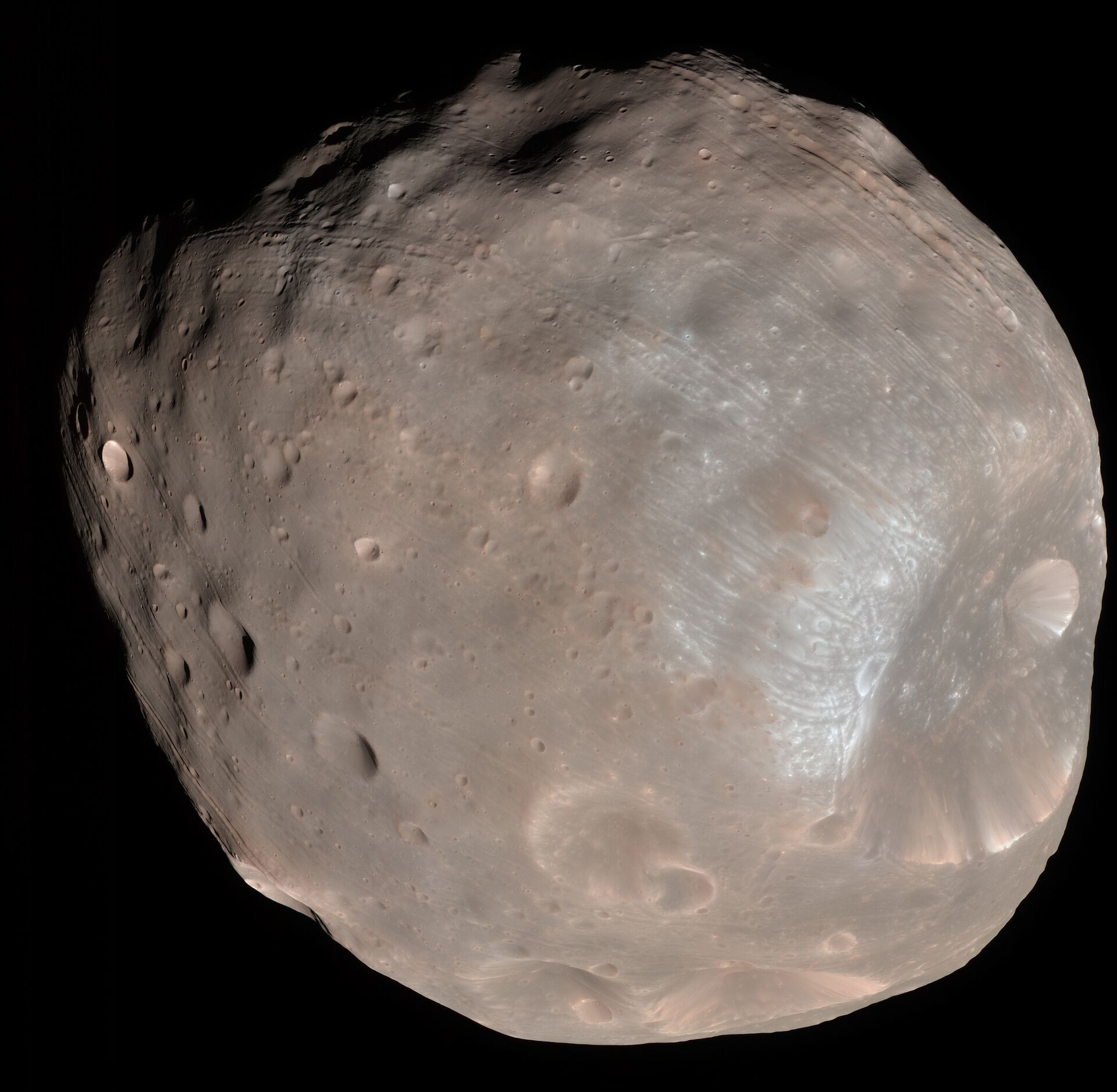The two moons of Mars - Phobos and Deimos - could be fragments of a larger satellite that once orbited the Red Planet, split in two by a massive collision.
According to research by astronomers from ETH Zurich published in Nature Astronomy on Tuesday, Phobos and Deimos likely originated from a larger single celestial body.
The object - thought to be a disk of rock and dust - could have been hit by another body, such as an asteroid, some 2.7 billion years ago, causing a powerful explosion. Two of the remains of the blast subsequently became trapped in the orbit of Mars - becoming Phobos and Deimos.
Seismic data from NASA's InSight mission was put through a computer simulation based on approximations of the properties of the two moons to observe the historical orbits of both Martian satellites.
"The idea was to trace the orbits and their changes back into the past", said Dr Amir Khan of the University of Zurich and the Institute of Geophysics at ETH Zurich.
According to the data, Phobos and Deimos would have crossed paths at some historical point — suggesting that they were likely in the same place and therefore share a point of origin.
The two moons are known to be "very irregularly shaped – like potatoes", as Amirhossein Bagheri, a doctoral student at the Institute of Geophysics at ETH Zurich described.
"Phobos and Deimos look more like asteroids than natural moons", he added.
Two Martian moons, #Phobos and #Deimos, have shone over Dubai #ufotwitter #mars #ConspiracyTheories
— UFO - AC research group (@topik122) February 12, 2021
Source: https://t.co/mZNMuVHgKW pic.twitter.com/wkHqX3ncht
The strange shapes of the moons are irregular in space, and have puzzled astronomers for decades. Planets and moons tend to become round over time due to condensing gravitational forces.
Traditional theories of the orbit are not consistent with their asteroid-like appearance. After becoming trapped encircling a larger planet, asteroids tend to fall into a certain angle relative to the object they surround, with unique planetary cycles that are extended at one end.
Phobos and Deimos, however, have a circular orbit around Mars and are in near-alignment with the Red Planet's equator.
The Zurich astronomers accumulated data on the properties of the rocks that make up the moons through InSight and merged this with measurements from other investigations into Mars.
Researchers were then able to produce a model of 'tidal forces', a space phenomenon that assumes every existing celestial body exerts some force against others nearby, including the way that the moon and Earth are in a constant gravitational tug of war.
The extent of tidal forces is influenced by a number of factors such as the composition of the objects, their mass, and the distance between them.
Observing Mars, Phobos and Deimos becomes difficult, because, while mass and proximity can be calculated, their makeup is largely unknown as no samples have been taken from the Martian moons. Current estimates claim that the moons are made up of intensely porous material with very low density.
As part of its Martian Moons Exploration project, Japan hopes to reach Phobos in 2025 and become the first country to extract surface samples and return them to Earth for observation.
InSight and other projects estimate that the moon's density is around two grams per cubic centimetre - less substantial than chalk (2.5g/cm^3) and limestone (2.7g/cm^3).
Using this supposition, researchers can paint a picture of the history of the two moons, their potential origin, and even predict their future.
The singular space clump that subsequently became Phobos and Deimos was a further distance away from Mars than Phobos is today and likely at the placement of Deimos. Phobos is observed to be inching toward Mars and is expected to collide with Mars in somewhere under 40 million years.
Deimos, similar to the predicted end of the Earth's own moon, will slowly drift further away from its planet of orbit until it is completely free.
The largest of the two - Phobos, is just 13.9 miles wide, while Deimos has a diameter of a mere 7.5 miles. Phobos is closer to Mars than its counterpart. Comparatively, the Earth's moon has a diameter of 2,158 miles — 155 times larger than Phobos and 288 times the size of Deimos.
Phobos is closer to Mars than its smaller celestial sibling.
Their names are those of two divine twins of Greek mythology, following their discovery by American astronomer Asaph Hall in August 1877. They were named for the children of Ares (Mars) and Aphrodite (Venus) with Phobos as the deity of fear and panic and Deimos attributed to dread and terror.




